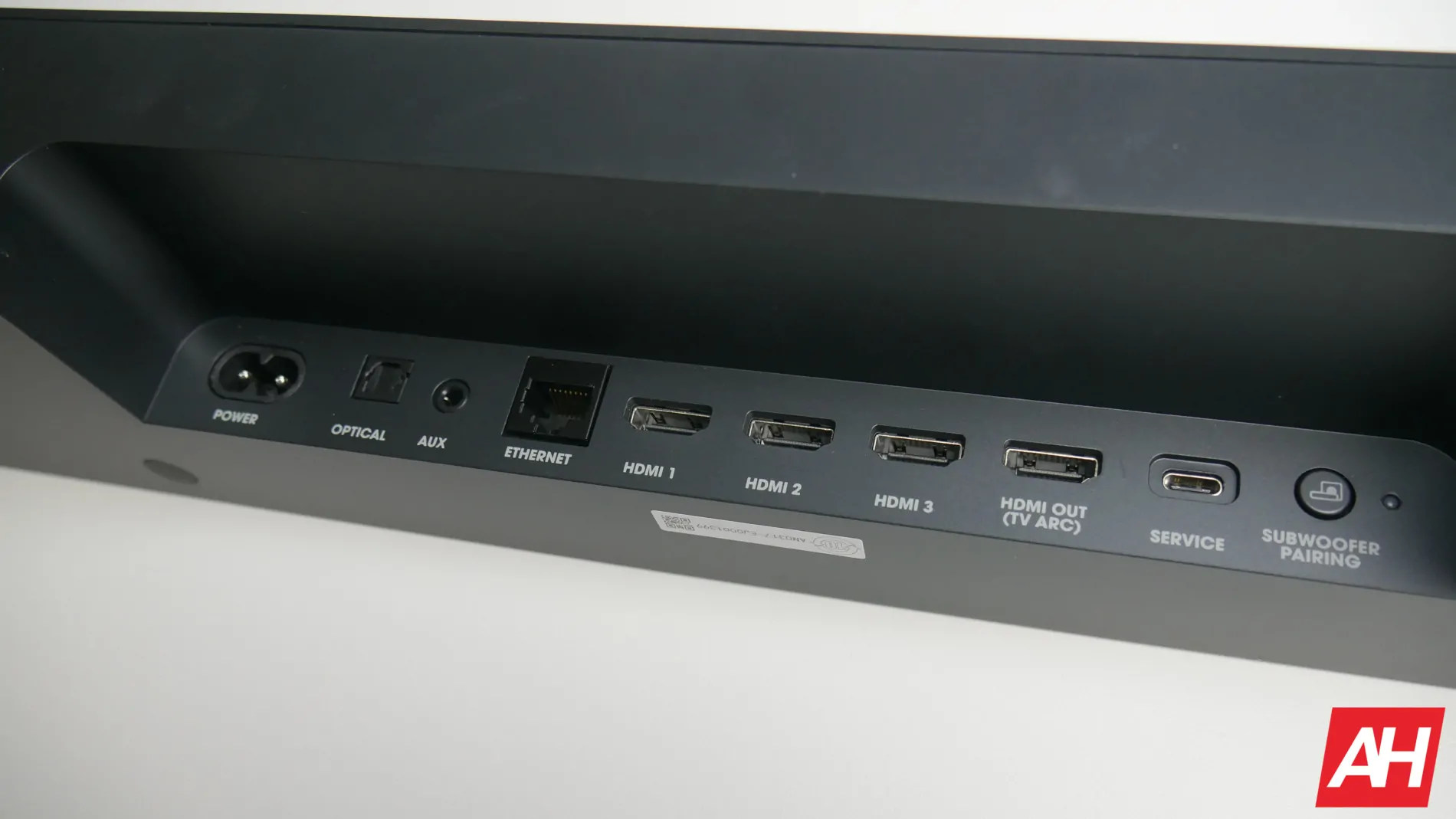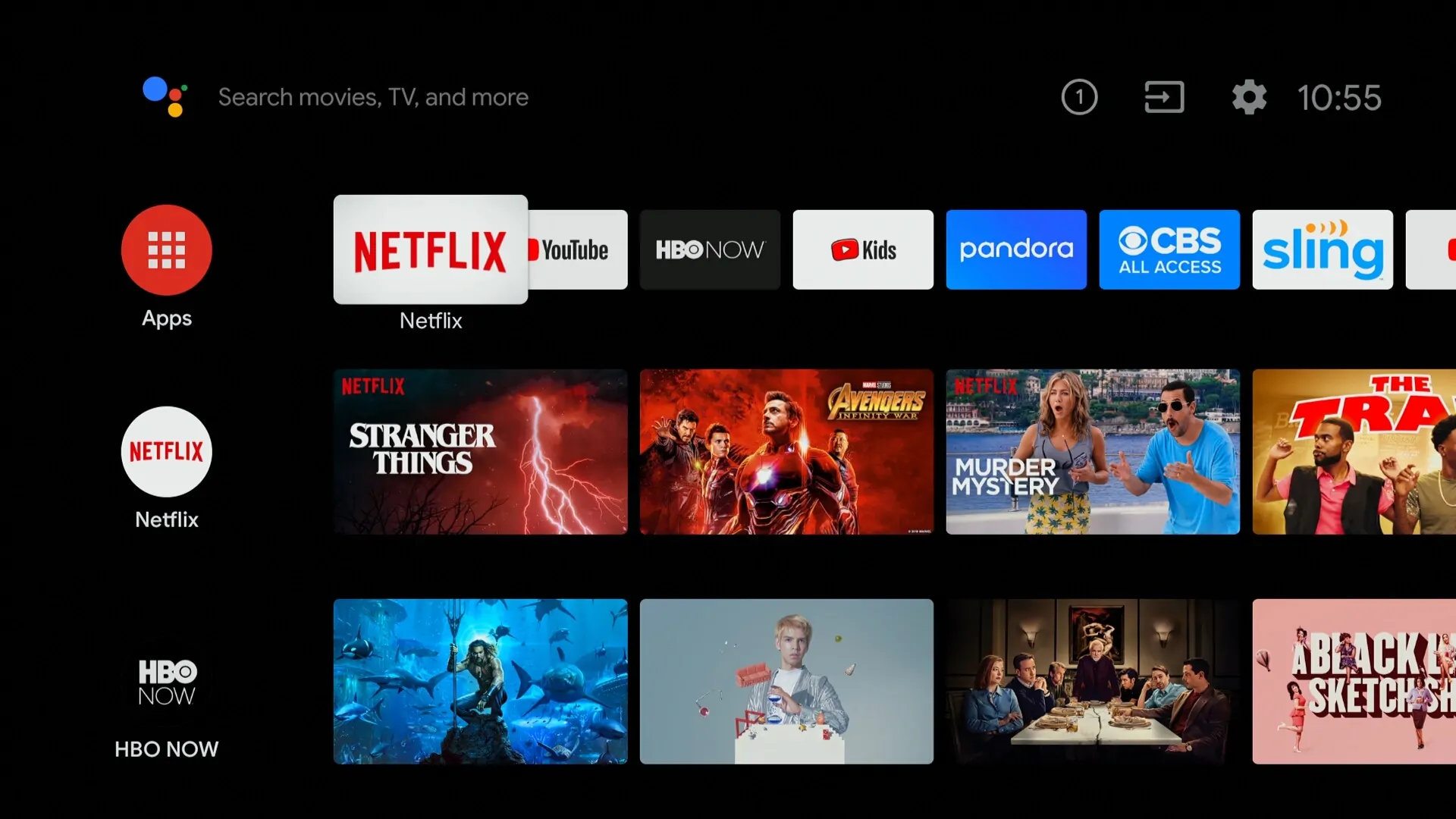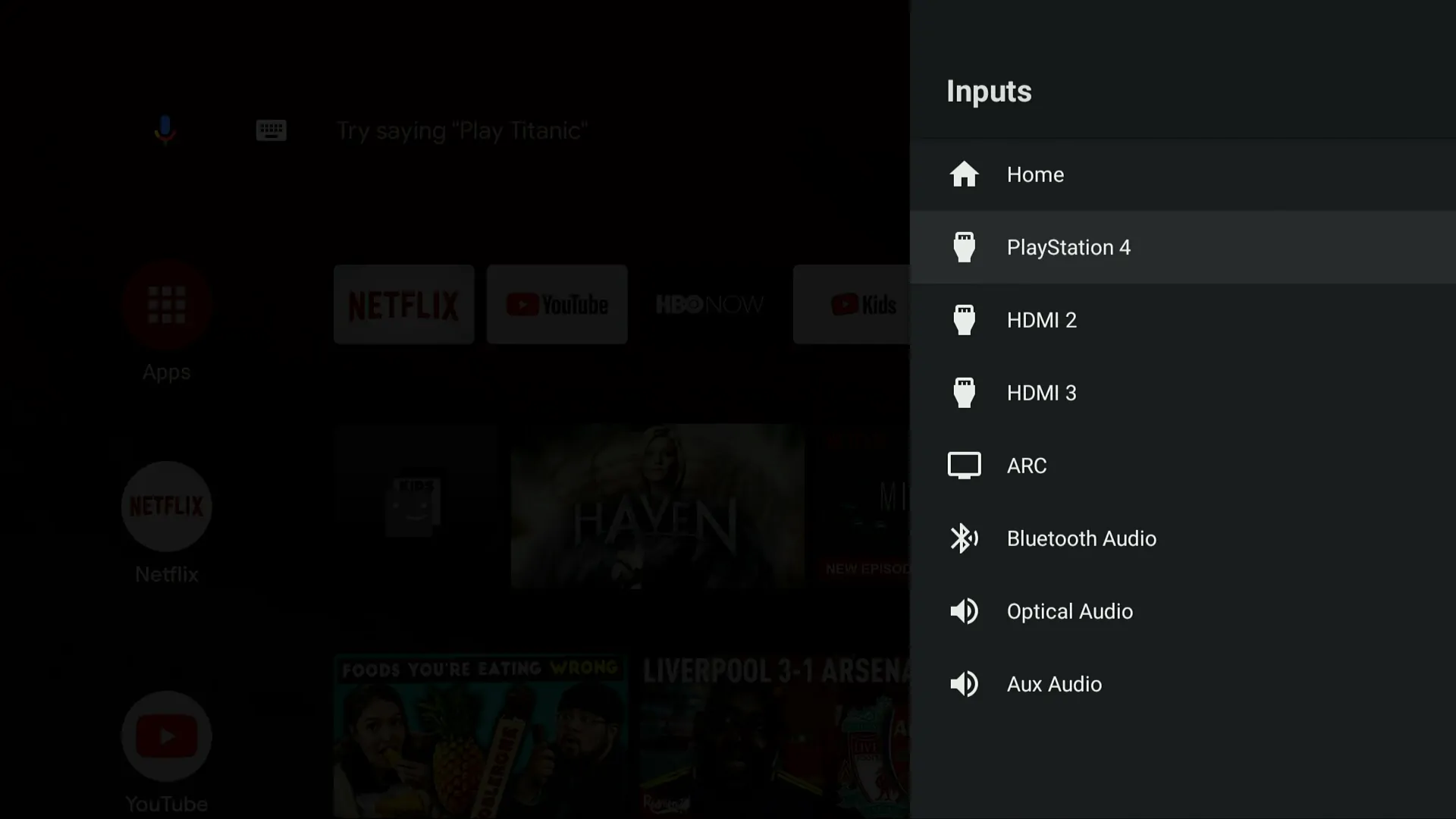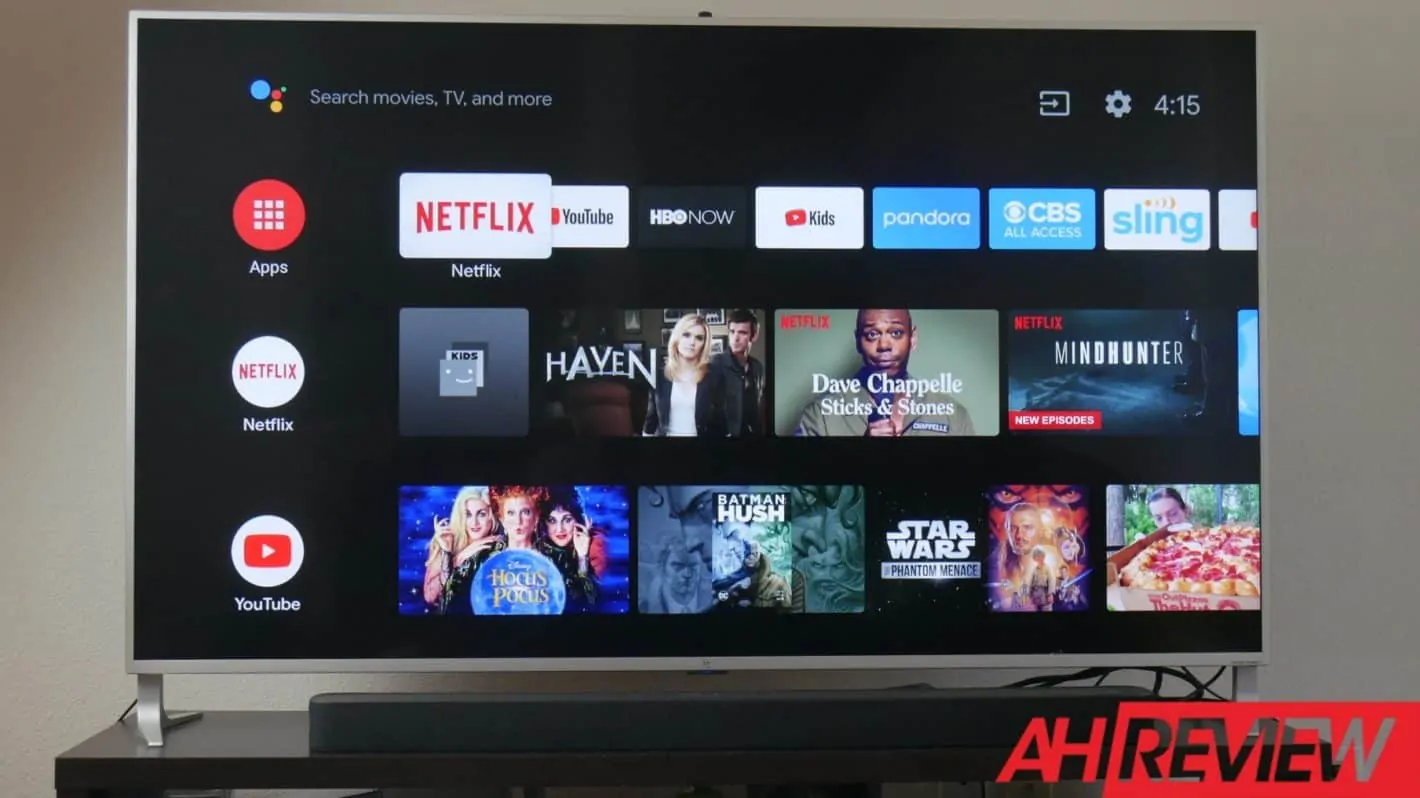The JBL Link Bar is one of the newest Android TV devices to hit the market. Unlike those that came before it, the Android TV interface is packaged within a soundbar. Making the JBL Link Bar the first of a new breed of devices. The first Android TV soundbar.
Unfortunately, the experience of using one has been a lot less exciting. The good news is there’s no one major reason why you shouldn’t buy the JBL Link Bar. The bad news is there’s a lot of little reasons why you probably shouldn’t buy it.
We’ll explain in our JBL Link Bar Review.
Not the best design we’ve seen from JBL
One of the stranger choices with the Link Bar is the design. Again, there’s nothing majorly wrong with the design, but it just doesn’t feel like a JBL product. If you already have a JBL soundbar then you can close this browser tab down now. Buying the JBL Link Bar won’t feel like an upgrade in terms of design.
We are looking at a very flat and square soundbar that very heavily leans on plastic. The whole unit just feels a little too cheap in this respect, and that’s not great. Especially considering that outside of TV sets powered by Android TV, this is an expensive Android TV device.

The top of the unit is a little better thanks to the inclusion of a small control panel. Here you’ll find volume controls, Bluetooth pairing and input buttons. As well as a switch to disable the device’s listening capabilities.

One of its design advantages is the inputs. Besides an actual TV, you are unlikely to find an Android TV device that offers as many inputs as this one.
The Link Bar features three HDMI inputs along with a fourth HDMI ARC input – the one you should be using to connect to your TV.

However, even here JBL has missed a trick as the lack of storage-related ports results in a finite amount of storage feeling very finite.
Looping your other devices through the HDMI ports on the device will give you the benefit of using Google Assistant (more on this later) and the Link Bar’s remote control to control those additional devices. Speaking of which.
The remote is better than you’d expect
If you’re used to soundbars then you’re probably also used to fairly small remote controls. So small they can feel pointless at times and that’s if you can find them. That’s not the case with the Link Bar. In a bid to accommodate the TV element of the product you do get more of a normal-sized remote in the box.

Now this is not the most robust or feature-rich remote. But for what it’s for, it felt (just about) enough. There are certainly complaints you could aim at the remote but that’s only if you compared it to a TV remote. As the Link Bar is not designed to be a replacement for your TV, but for your soundbar, there’s little point focusing on what you are missing from a TV remote. What’s more important is what you are gaining compared to a soundbar remote.
On that point, the remote was surprisingly useful. You have the option to switch HDMI inputs, control volume, and launch a Bluetooth connection. As well as also quick-access buttons for Netflix and Google Assistant.
The biggest criticism of the remote, is the same as the Link Bar. The design in general. It is just too heavy on the plastic resulting in a cheap look and feel.
Android TV, but nothing special
The main point with this device is supposed to be Android TV. After all, if you don’t want Android TV, or already have Android TV, then this isn’t the soundbar for you. Yet, this is a very basic version of Android TV.
For some, that might be a selling point. For those who are already familiar with the Android TV platform, there’s very little new with this product. Barely anything at all, really. It is Android TV as you love or hate it, and that’s about it. While that could be said for a lot of Android TV devices, this one costs $400.

There are some pre-loaded apps on here, and more than you’ll find on other Android TV products. These include HBO NOW, Pandora, Sling TV, and CBS All Access.

This is in addition to the usual Google TV apps suite, including both YouTube and YouTube Kids.
Deleting, or disabling these apps is only a matter of a few clicks so this is not a problem, just an inconvenience.
A positive here is we are working with Android 9 Pie. That makes the JBL Link Bar one of the few devices running on the latest Android TV version.
Due to how long the device has been available for, it is impossible to comment on the long-term update support by JBL. However, the device did receive an an update on September 3, 2019. At present, there’s no details or a changelog available for the update. Likewise, very little was seen to have changed when comparing before the update to after.
Google Assistant complicates things
With this being Android TV, and a newer version, you do get Google Assistant thrown in for free.

That’s standard for a device like this, but on this occasion you also get the added benefit of Google Assistant’s ability to control HDMI ports. This is probably the Link Bar’s best single feature. If you have everything connected to the Link Bar then switching is just a matter of asking Google to do it. That’s the idea, anyway.
In our experience, this was far more effort than it should have been. Most of the time, it just would not work at all. When asking the device to switch to a certain input, Google Assistant did understand the request and acted as if it was complying, but nothing happened.
Although the image below is a screenshot, you can also consider it a video. Nothing ever happened beyond what’s shown below.

Switching inputs too awkward
Even if it did work as described, there’s still the issue of knowing what to ask Google Assistant to change to. For example, most people will probably assume you can just say “Hey Google, turn to the PlayStation 4.” This is especially true as Android TV will recognize the inputs for what they are – PlayStation, SHIELD, and so on. The Link Bar also recognizes them as well in this respect.

However, the Link Bar never understood when asked in this way. Instead, Google Assistant requires the speaker to ask in terms of default labels. For example, “Hey Google, turn to HDMI 1.” This felt like another missed opportunity as remembering what was connected to what input felt like a chore too many. This will particularly be true for those who are often swapping devices in and out of ports.
Likewise, if you were to use language like “switch to PlayStation 4” then all you would get in return is a selection of YouTube videos comparing the Nintendo Switch to the PlayStation 4.
Another downside with this Google Assistant feature – although it’s more of a downside with the Link Bar as a whole – is the connected HDMI cables appeared to run very hot. A little too hot for our liking. So while you can connect multiple devices to the Link Bar and (in theory) use Google Assistant to switch between them, I’m not so sure you should.
Inputs aside, the Google Assistant largely works as expected. You can fire it up and get your usually feedback to questions asked, control various compatible devices, or just search the interface for something to watch. Response times were sluggish compared to other devices with the Assistant always appearing to need an extra moment or two to process the command. It would eventually get around to doing what you asked – as long as you were not asking it to change inputs.
The performance in general was a much bigger issue.
It might be early but the performance is bad
General performance is not great. This unit has taken an age to arrive and that had led to assumptions on the device’s reliability. During this review, those concerns felt justified.
The performance is not terrible. It’s not. But to say it’s fluid, smooth, or even reliable would be a lie. Now, these might be teething problems that are ironed out in due course. Or they might also be problems related to just the device we had. But, they also might be here to stay. The only thing we can say for definite is that during our time with the Link Bar, it was a struggle to work with. More accurately, it struggled to work with us.
The Link Bar does not play equally nice with all apps. This was noted fairly often with the system just struggling to navigate an app’s interface properly. This sluggish behavior was more evident with some apps than others, and so it may in fact be an issue related to how demanding some apps are. The difference is this level of struggle is not noted on other devices, including the NVIDIA SHIELD.
Yes, the SHIELD is a far more powerful device, but that’s sort of the point. The Link Bar is not a powerful device, and it knows it.
The brand-new Hulu Android TV app is a great example. This app is exactly why a device like this exists and it works reasonably well on a number of Android TV devices that we’ve tested. It also overall works well on the JBL Link Bar. However when you compare the experience between the devices it is more sluggish on the Link Bar. Interface navigation resulted in too much stuttering and put simply, lacked in comparison to other Android TV devices. Even those considered less powerful.
Link Bar not a gaming device
It’s important to point out that the app problem was not enough of a problem to be deemed an issue as the apps tested still worked fine. The point here is simple there’s a noticeable difference in performance and that is likely to be more of an issue for those who are looking at using more intensive Android TV apps. Especially games. Although the storage is far more likely to be a concern for gamers.
The Link Bar is hardly a storage beast. On offer is 4GB and as you might expect, that’s the total. Considering the system itself occupies around 1.5GB, that does not leave much room for the user to work with. Space is extremely limited and while this might not be a major issue if you’re just downloading a few video-streaming apps, for games, this is not going to work.
That is, unless you choose your games extremely wisely and constantly delete them to make way for others. But that’s just another example of you, the user, accommodating your behavior to suit the device. It should be the other way around.
Overall, the performance suffered greatly for us. Considering this is a new device, with very few user-installed apps and only connected to common household devices, the performance was far worse than it should have been. Begging the question how will a device like this operate over longer periods and/or under heavier loads?
The Link Bar sounds good, though
Sound is one area where you can expect a decent return for your money. After all, this is JBL and this is an area the company can genuinely add to the experience on top of what is already on offer. And JBL has.
The sound does add depth and width to the proceedings and there was certainly a noticeable improvement compared to the TV speakers. It was not quite as loud, however, resulting in the user having to turn the volume up higher than they might normally. Once a suitable volume was reached though, you do get a nice and balanced output.
Yes, the bass is not quite there, but that’s the nature of a soundbar. That’s also why JBL sells a separate subwoofer that you can add to the JBL Link Bar. For those that prefer a hard number to understand the output, the soundbar frequency response comes in at 75Hz–20kHz.
The sound is also one of the rare instances where you’ll find some Android TV software tweaking is in effect. There’s an EQ section in the settings that lets you (slightly) adjust the output. This is not an advanced level of control by any means and so you shouldn’t be expecting much. But still, it is a difference compared to stock Android TV.
For example, you can set the audio to “movie” when watching a movie. There’s also a slider option to increase/decrease the bass.

The connection interface has also been tweaked. This is Bluetooth 4.2 and the Link Bar’s remote comes with a quick access button allowing an audio device, like a smartphone to be connected quickly. Once the devices are paired, you end up with a usable, albeit generic ‘connected’ interface.

Not all plain (sound) sailing
There were also some reliability issues with the sound. Frequently, the sound would just disappear. This primarily happened when using other devices connected over HDMI. Now this could be the other device(s) or the cable(s), but this was happening with multiple devices that use different cables. Including cables that ship with those devices. This was also tested in two different rooms with different setups.
The only common denominator was the Link Bar and whenever the Link Bar was removed from the equation, the issue stopped.
Fixing the issue proved equally problematic as there was no simple or consistent fix. You’d spend have your time rebooting the various devices along the chain or detaching and reattaching the cables just to find the sound suddenly returning.
Overall, the sound properties are the main reason why you might want to consider the Link Bar. Although, that’s probably the only reason you should be. And even then, you’re probably better off looking elsewhere.
Should you buy the JBL Link Bar?
This is a difficult question to answer. If you want a direct answer then, no. Probably not. You are better off buying separates in this sense. Although the all-in-one form proves more convenient, it doesn’t really bring much to the table other than convenience. For the cost, and sacrifice in performance you are better off buying a dedicated Android TV device (or a TV powered by Android TV) and choosing a soundbar that specifically meets your audio needs.
You might end up paying more this way, but the reality is you’ll get a better and more reliable experience on both fronts. What’s more, if anything does go wrong with one of the products, you’ll only need to replace one, not both.
To be fair to JBL, that is a criticism that could be leveled at just about any Android TV soundbar which is where the difficulty in answering the question comes in. JBL hasn’t done anything wrong here and the device does deliver what it intends to. I mean, it does work. Most of the concerns raised are related to the software and in time those might be fixed. As of right now, however, the experience simply does not justify the price tag.
In saying that, if you are specifically looking for an Android TV soundbar, then the JBL Link Bar is not a bad choice.
After all, it is the only Android TV soundbar currently available.

